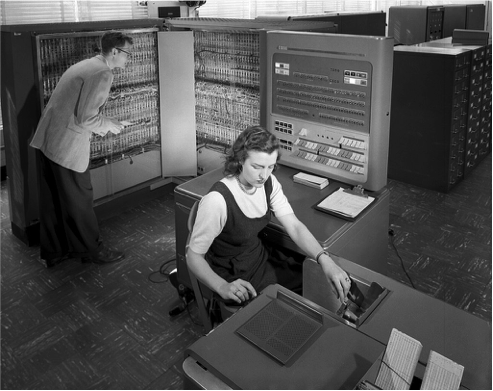We can’t predict whether Gov. Jerry Brown will sign Assembly Bill 1066, which the Legislature just passed and which imposes stricter overtime rules on farm labor. But even if he vetoes it, a similar bill will be passed in 2019 and signed by the next governor.
That’s all the incentive farm owners need to keep advancing automation. Another incentive is that California farmers, as the Sacramento Bee just reported, lost $9 billion in revenues in 2015 from the drought.
You’d think that a state whose penultimate governor, Arnold Schwarzenegger, became famous playing a cyborg would understand that machines gradually are terminating most human jobs, and that more restrictions on human labor only will hasten that day.
 The AP story waxed nostalgic how, if Brown signs the bill, it would “mark a victory in the fight to improve farmworkers rights in the decades old movement launched by Cesar Chavez, the legendary co-founder of the National Farm Workers Association who fought for higher farm worker pay.” But when Chavez co-founded the National Farm Workers Association (later called the United Farm Workers) in 1962, a computer was a gigantic machine that ate Hollerith cards in an air-controlled room.
The AP story waxed nostalgic how, if Brown signs the bill, it would “mark a victory in the fight to improve farmworkers rights in the decades old movement launched by Cesar Chavez, the legendary co-founder of the National Farm Workers Association who fought for higher farm worker pay.” But when Chavez co-founded the National Farm Workers Association (later called the United Farm Workers) in 1962, a computer was a gigantic machine that ate Hollerith cards in an air-controlled room.
Now it’s your iPhone.
The AP story added, “Gonzalo Najera, who drives a tractor on Salinas Valley’s lettuce, carrots and broccoli fields, said some farmers are saying the extra overtime payments could drive them out of the state, but he doesn’t buy the argument.
“‘The growers can’t leave,’ Najera said. ‘They can’t take their dirt with them.’”
Najera, meet the Lettuce Bot: “SALINAS (CBS/AP) – On a windy morning in California’s Salinas Valley, a tractor pulled a wheeled, refrigerator-sized contraption over rows of budding iceberg lettuce plants. Engineers from Silicon Valley tinkered with the software on a laptop to ensure the machine was eliminating the right leafy buds.
“Hired by a Salinas-based agricultural produce company, the engineers were testing the Lettuce Bot, a machine that can “thin” a field of lettuce in the time it takes about 20 workers to do the job by hand.”
The Economist provided a picture and explained how it operates: “Enter Lettuce Bot, the brainchild of two Stanford-trained engineers, Jorge Heraud and Lee Redden. Their diligent robotic labourer, pulled behind a tractor, starts by taking pictures of passing plants. Computer-vision algorithms devised by Mr. Redden compare these to a database of more than a million images, taken from different angles against different backdrops of soil and other plants, that he and Mr. Heraud have amassed from their visits to lettuce farms. A simple shield blocks out the Californian sun to prevent odd shading from confounding the software.”
Will the farm-worker lobby be able to impose Luddite-style restrictions on the new technology? Not when their statewide clout is a fraction that of Silicon Valley, which now basically runs the state government.
A January 2016 study by Oxford Martin for Citi predicted 57 percent of global workers could be replaced by cyborgs. Specifically, it found, “As shown by a number of studies, labour-saving inventions may only be adopted if the access to cheap labour is scarce or prices of capital are relatively high…. In addition, recent empirical research reveals a causal relationship between the access to cheap labour and mechanisation in agricultural production, in terms of sustained economic transition towards increased mechanisation in areas characterised by low-wage worker out-migration.”
Translation from econo-speak: When labor prices rise and the cost of technology drops, cyborgs enter with the relentlessness of Arnold in the original, 1984 “Terminator.”
Regardless of what the California Legislature and governor do, they’ll be back.
Longtime California commentator John Seiler’s email is: [email protected]

